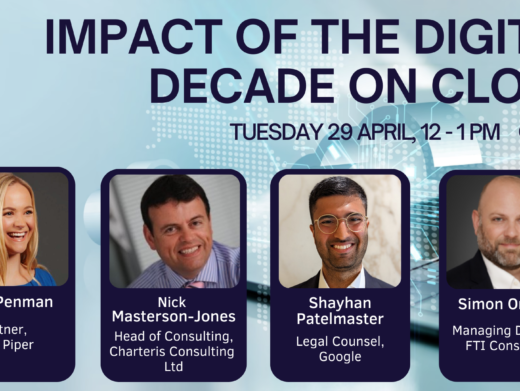The UK legal services market has seen significant growth since the mid-1990s. Although growth has been the main driver for law firms historically, this has been overtaken more recently by a focus on profitability, and increasing profit per equity partner or PEP.
Competition in the marketplace means that equity partners and fee earners are finding themselves being driven to increase revenues from their existing client base, while also being called upon to win new work and manage people within the firm. However, competition is also driving law firms’ recruitment styles towards a message of flexibility, work-life balance, and options in the workplace, in order to recruit and retain the best people.
A quick visit to the Web sites of Linklaters or Clifford Chance reveals their commitment to diversity. Eversheds’ lifestyle policy offers flexible working options, among other benefits. But is it really possible to have both? To be more productive and do more, but offer more lifestyle choices, or greater work flexibility at least, to employees?
There is a chasm to be crossed, and unified communications has much of the material required to build the necessary bridge. We’re not dealing here with the niceties of work-life balance packages, but focusing on ways in which working practices can be altered in favour of both the firm and the fee earner.
The three main challenges to bridging this gap are achieving effective and positive change, achieving smarter working practices, and dealing with increased client demand.
Changing the Status Quo
It is highly likely that your fee earners already think they are as productive as they can be. Most today rely heavily on e-mail, and will have seen significant benefits in the change from traditional communication methods, both in terms of speed and auditability. Moving away from tried and tested communication methods may cause resistance to change and result in backward progress. Core communication tools like e-mail should be central to any system of modernisation, and unified communications tools make this possible. They allow employees to continue using e-mail as their primary source of communication and information, but enhance its usefulness.
Integrating multiple communications media and adding functionality via the e-mail interface provides firms with productivity benefits in a trusted and familiar environment, and accelerates fee earner adoption of the new technology. They can retrieve all voice, fax and e-mails from their e-mail inbox, making it quicker and easier for them to access and manage client correspondence while reducing the number of devices they must refer to as they go about their work.
PEP up the Process
Higher profits per equity partner (PEP) due to increased fee earner productivity are essential to the progressive law firm, but for many the historical legacy woven into their processes could mean that the only route to higher profits is simply working harder. However, working harder is not productivity. Productivity is about achieving more, smarter, with less personal impact.
A unified communications infrastructure, enabling insight into presence states at the desktop, desk phone and mobile devices, coupled with real-time remote collaboration using Web conferencing tools, offers several routes to higher PEP. Clients automatically know where you are and whether you can speak to them, for example. Reduced breaks in concentration, by having to answer queries, arrange call backs, or check e-mail for urgent enquiries, are the result.
Partners and their employees can manage their presence via one source. Keeping their Outlook Calendar updated, for example, will update voice-mail, provide front line access to information, and tell clients when they will be called back. Partners can benefit personally, from being able to do the same job in the office, while away on business, or working from home, avoiding the pile up of work back at the office and undulating levels of client service.
Always Informed
Client service has become a new differentiator for law firms driven by a change in the attitude of clients, and it brings other challenges. As clients become increasingly aware of their rights, demand information more quickly and readily, and in life are generally more ‘service aware’, fee earners need to be readily available to clients and quick to respond to their needs. This places increasing pressure on the firm with more time on answering queries, communicating through different channels such as phone, meetings, mobile and letter, and trudging through voice-mails and e-mails after a spell out of the office.
Features such as presence, mobility and unified messaging all improve fee earner contactability. This may be perceived as a negative by anyone who doesn’t embrace an ‘always on’ culture, but the purpose of such tools is not really about being always on. It is more about the customer being always informed, and therefore satisfied. For example law firms can significantly increase their service delivery levels by avoiding the voice-mail black hole and telling customers when they can expect a reply, or making meetings quicker and easier to arrange via Web conferencing.
The most advanced firms will also benefit from routing enquiries about the status of a case to their secure client extranet so that routine ‘where are we up to?’ enquiries can be answered without any intervention, easing fee earner pressure. Extranets used in connection with a unified communications infrastructure can also be extended to offer other services like online meeting requests, click to call via Internet telephony, past communication audit trails, status updates and expected response times, adding new layers of client service while giving staff the time to focus on the urgent with the important automated effectively.
Improving productivity and work-life balance is not simply about giving all of your employees Blackberries and saying ‘away you go’. Even the most productive people in the world have their limits and personal productivity tools can only go so far. It is more about changing the way the law firm operates in order to strike out inefficiencies and remove stages of processes, or indeed processes themselves that need not necessarily exist. Altering the pattern of the fabric of the firm will bring about new realisations in the way your people interact, where you work, and how you engage with customers. Looking at the bigger picture means that you are investing effort in building the foundations of a more flexible, productive and satisfying workplace, rather than merely paying lip service to it.
Case Study: Mills & Reeve – bringing information into one place
When Mills & Reeve embarked on an upgrade of its telephony systems it soon realised that it had the opportunity to integrate communications and IT via an intelligent unified communications infrastructure.
Rather than focusing solely on just meeting today’s needs, unified communications would enable it to innovate, exceed client expectations and improve working practices across the firm.
Pulling relevant information into one place, quickly and seamlessly, was essential, because it meant less time would need to be spent searching for information and connecting people.
It was also necessary to find a modern, open standards-based infrastructure, which was scalable for future growth. Mills & Reeve’s choice of provider was Redstone Converged Solutions.
Because law is a people-based industry, improving productivity and profitability, and integrating information about people and clients was critical. The possibilities included automated identification of incoming client calls that could trigger direct call routing to the right people, saving time for staff and avoiding the frustrations faced by clients passed from one person to the next.
The use of presence technology, which can indicate the accessibility of a person on a computer network, and integrates voice-mail and e-mail systems, was another key function.
Mills & Reeve is also focusing on using the system to improve collaborative working across the firm, which improves productivity and profitability, for example by reducing required travel time or making it easier to share information.
Dave Hardcastle is Technical and Operations Director at Redstone Converged Solutions: www.redstone.co.uk/




